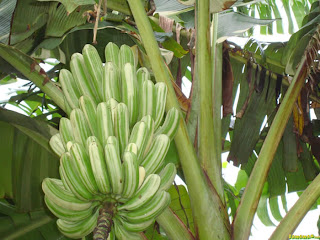Yes, as is so often the case, and entire family of some 148 genera is best known by the fruits of just one genus. Before we get to the joys of that one genus, let’s look a little more at the whole family. The Rutaceae are one of those “commercially important” families and not just because of the fruit. Rutaceae are widely distributed worldwide - mostly in the tropics and subtropics, but outliers like the Bush Rue and Mairehau are naturally found in temperate climates. The Rutaceae family is also a popular source of ornamental plants (another part of the commercial importance).
So, what knits together this family of some 1,400 species? The Rutaceae are mostly woody plants - plants with permanent, durable stems and root systems, which contain sturdy cellulose and lignin as structural elements. Woody plants are most often associated with trees, but can be as small as bushes and shrubs, as long as they contain that permanent, woody core. In the Rutaceae, that permanent, woody core is such that some tropical species are highly valued for timber. Moving out from the stem, Rutaceae leaves, though variously shaped, are studded with oil-producing glands.
Compare the leaf shapes. That’s not what these two plants have in common.
It’s the oil that is the real distinctive feature of the Rutaceae. Along with one other plant family, the Rutaceae are the only natural producers of a class of chemicals called limonoids. Limonoids are just one of a number of oils produced by the Rutaceae (another element of that commercial importance is the use of essential oils from the plant family in perfume manufacture. But it’s limonoids that are the really distinctive ones.
Limonoids appear to function mainly within the plant as an herbivore deterrent - they are responsible for the bitter taste of citrus peels, and, when consumed, act as a growth inhibitor, and even as a toxin to insects. Some limonoid extracts could even be used as a natural insecticide. Limonoids also have an array of potential health benefits to humans. Research is ongoing, but certain limonoid compounds appear to have anti-cancer properties. See? Citrus is good for you, and not just when it comes to vitamin C.
Let’s talk a little about the vitamin C. Long before we started investigating the anti-cancer properties of orange peels, we worked out that the stuff inside the peels could prevent scurvy (even before it was understood that scurvy is simply a vitamin deficiency). The fruits of the Rutaceae, and of the citrus genus in particular, contain high concentrations of ascorbic acid (aka vitamin C). But wait, there’s more! The fruit of the citrus genus also contains high concentrations of folate and potassium. Beyond nutrients, citrus fruits are a veritable treasure trove of chemical ecology. Citrus fruits contain, besides limonoids, flavonoids, carotenoids, and hydroxycinnamic acid. Intake of flavonoids is correlated to a lower risk for heart disease, carotenoids are a source of vitamin A and may have anti-cancer properties, and hydroxycinnamic acid is an antioxidant with potential anti-cancer properties.
Now that I’ve all but told you to go eat some, let’s look at the common citrus fruits in somewhat greater detail. There are a number of citrus fruits out there, and seemingly more entries in the -elo, -ine, and -quat categories every year. Thing is, all of these fruits are cultivars and crosses of a fairly small number of species. Citrus sinesis, the sweet orange, is one of the prime ones - native to southeast Asia, it has been spread all over the world.
Sweet oranges, blood oranges, jaffa oranges, valencia oranges, navel oranges - all varieties of Citrus sinesis. Then there is Citrus maxima, the pomelo. These deceptively thick-skinned fruits are native to Malaysia, and have brought on buyer’s remorse among many a produce aisle adventurer drawn to the huge size of the fruit, and unaware of how much of that was rind.
Cross Citrus sinesis with Citrus maxima and you get the grapefruit, and all of its cultivars. Tangerines are not some dwarfed species of sweet orange, but are, in fact, a separate species, Citrus reticulata. Tangerines (or mandarins) were first cultivated in China and Japan, and have a huge amount of varieties, to the extent they were once considered a separate species. Cross a tangerine with a grapefruit, and you begin to realize what a genetic mishmash the tangelo is. Kumquats, Citrus japonica, are fun to say, but underutilized in the United States.
Lemons and limes are interesting, as rather than one species having many names, here many species have two names. Lemon refers to both the fruit of the Citrus limon, but also to a number of fruits of lesser-known citrus species, and hybrids of those species. Similarly, lime refers to the fruit of the Citrus aurantiifolia, and to the fruits of a number of related trees and bushes. The less said about the inevitable lemonime the better.And then there are the citrons, the papedas, the yuzus, and the bergamots (the stuff they use to flavor Earl Grey tea), to name a few of the more obscure citrus fruits. There are all kinds of interesting branches to climb around in the Rutaceae, and you never quite know what you’re going to find there. Plant families are fun that way.



























